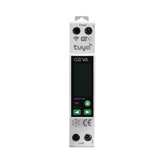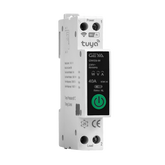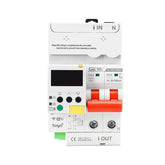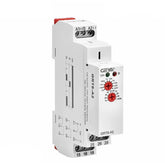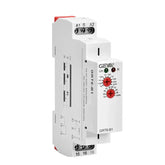Relay Module Explained for Everyone: The Ultimate Guide
Have you ever wondered how everyday devices seamlessly function with just a simple signal? From turning on home appliances to automating industrial machinery, the relay module is a silent yet powerful player. Acting as a bridge between low-power control circuits and high-power devices, these modules have become indispensable in modern electrical systems.
In industries, relay modules are the backbone of control systems, ensuring smooth operations in manufacturing, lighting, and even safety alarms. At home, they power smart home automation, bringing convenience to our fingertips. But what exactly is a relay module, and why is it crucial in both personal and industrial applications?
Whether you are an engineer exploring its technical aspects or a buyer seeking reliable solutions, understanding relay modules can unlock efficiency and innovation. If you’re searching for a quality relay module, look no further than Geya where a wide range of products is designed to meet your needs with unparalleled reliability.
In this article, you shall find the answers to the following questions:
- What is a relay module for?
- What is the purpose of relay module?
- How can I tell if my relay is malfunctioning?
- What are the functions of relay module?
What is a Relay Module?
At its core, a relay module is an electrical device designed to control high-power circuits using low-power signals. Unlike a simple relay, which is a standalone switching device, a relay module integrates multiple relays with supporting components like diodes, resistors, and terminal blocks for easy connectivity. This makes it more versatile, user-friendly, and suited for complex applications.
While a simple relay requires additional wiring and circuitry for proper operation, a relay module circuit is pre-configured, reducing setup time and enhancing reliability. For instance, a 5V relay module is specifically designed for direct interfacing with microcontrollers like Arduino and Raspberry Pi, allowing seamless integration into various projects.


Components of a Relay Module
A relay module is more than just a switch—it’s an intelligent assembly of components working together to deliver precision and reliability. Let’s break down its key elements:
-
Electromagnetic Coil: It actuates the relay terminals by generating the magnetic field.
- Armature: The movable part that switches the relay contacts between open and closed states.
- Contacts: Include normally open (NO) and normally closed (NC) terminals,controlling the connected load.
- Protection Components: Diodes prevent voltage spikes, while resistors ensure stable operation.


Compared to a standalone electrical relay board, a relay module circuit includes these added components, simplifying integration into your system. Whether you need to automate lighting, secure your home, or operate machinery, relay modules like those from Geya make the process efficient and hassle-free.
How Relay Module works? (Relay Module Working Principle)
- When a low-voltage input signal is applied, the electromagnetic coil creates a magnetic field.
- This causes the armature to move, which switches the contacts to control a high-power load.
- On removing the input signal, the contacts return to their original state. Therefore, the relay module circuit serves as an effective mechanism for isolating and controlling various devices.
Types of Relay Modules
Relay modules are available in different types, each designed for specific applications. Understanding these differences is necessary in the selection of the right module according to your requirements:
1.Electromechanical Relay Modules
- This is the most common type of electrical relay that uses an electromagnetic coil to move a physical switch.
- Best suited for applications requiring high current control, such as relay control modules in industrial machinery.
- Example: A 5V relay module for basic switching tasks.
2.Solid-State Relay Modules (SSR)
- With no moving parts, these devices deliver unmatched speed, whisper-quiet operation, and exceptional durability.
- Ideal for high-speed switching applications in home automation or industrial control systems.
- Can handle high-frequency operations better than traditional relays.
3.Reed Relay Modules
- Various configurations of relay modules can be used to manage power-switching systems effectively.
- Common in low-power applications, such as precision instrumentation and communication devices.
4.Latching Relay Modules
- Maintain their state after activation without continuous power.
- Useful in applications where energy efficiency is critical, such as remote control systems or battery-operated devices.
5.Specialized Relay Modules
- Includes automotive relays (e.g., what does a relay do in a car) or wireless relay modules (e.g., io wireless relay) for advanced remote control operations.
6.Polarized Relay Modules
- Incorporate a magnetic field to determine switching direction, ensuring reliable operation in DC circuits.
- Ideal for sensitive applications like signal routing and fault protection systems.
7.Time-Delay Relay Modules
- Feature adjustable delay mechanisms to control the timing of operations.
- Useful in relay module circuit setups for sequential control in automation systems or lighting systems.
Types of Relay Module Configurations
When working with switching power systems, you can use various relay module configurations. These configurations include Normally Open (NO) relay modules, Normally Closed (NC) relay modules, and Optoisolated relay modules, among others. Below, you can find more information about these types of relay modules.
Relay Module Types Based on Poles/Throws
- SPST Relay Module: SPST stands for single pole and single throw. It consists of only one pole that can control only one circuit.
- SPDT Relay Module: SPDT is abbreviated for single pole and double throw configuration.
- DPDT Relay Module: This type of relay is based on a double pole and double throw (DPDT) configuration.
- DPST Relay Module: DPST stands for double-pole, single-throw (DPST) configuration.
Relay Module Types Based on Channels
- 1-Channel Relay Module
- 2-Channel Relay Module
- 4-Channel Relay Module
- 8-Channel Relay Module
Relay Module Types Based on Switch Type
Relay modules based on switching, are classified as normally open (NO) and normally closed (NC). In a normally open (NO) configuration, the circuit stays disconnected until the relay is triggered, at that moment the connection is closed. In an NC setup, the circuit is closed by default and opens when the relay is activated.For more details, please read Geya's article on relay module guide.
By understanding these types, you can better determine which relay module fits your specific application, whether it's a 4-channel 5V relay module for your DIY project or a high-performance 4204 relay module for industrial automation. Visit Geya Online Store to explore reliable options tailored to your needs.
What Functions Does a Relay Module Perform?
Relay modules are versatile devices designed to simplify control in electrical systems. Here are their core functions:
Isolation Between Circuits
- Relay module circuits ensure electrical isolation between the low-power control side and the high-power load, safeguarding sensitive components like microcontrollers.
- Example: Arduino relay modules are commonly used to prevent damage to control systems.
Switching High-Voltage Devices
- A relay module, such as a 5V relay module, can control devices requiring high voltage or current, like motors or heaters, with just a small input signal.
- Automotive systems also use relays extensively (e.g., what does a relay do in a car).
Overload Protection
- Relay modules can protect devices by disconnecting the circuit during faults or overloads. For example, relay boards in industrial systems often serve this safety function.
Time-Controlled Operations
- Time-delay relay modules can sequence operations, ideal for industrial machinery or lighting systems.
- Modules like 4-channel 5V relay modules enable simultaneous control of multiple devices in a time-efficient manner.
Signal Amplification
- Weak input signals from a control board are amplified to switch larger loads, a key function of modules like USB relays or Honeywell relays.
Remote and Automated Control
- Wireless relay modules, such as io wireless relay, facilitate remote operation in smart systems.
How to Select the Right Relay Module
With many relay module configurations available, it can be tough to find the right one for your needs. This guide will help you choose the right relay module by explaining the different types.
Voltage and Current Requirements
Ensure the module matches the voltage and current of your load and control system. For instance, a 5V relay module is ideal for low-power control signals, while some loads may require modules with robust specifications e.g. 8-channel 12v solid state relay module.
Number of Channels
Depending on your application, choose a single-channel module or a multi-channel one like the 4-channel 5V relay module to control multiple devices simultaneously. For larger setups, explore options available under the relay board Amazon to manage complex systems.
Application Type
- For automotive purposes, consider modules optimized for vehicular systems (e.g., what does a relay do in a car).
- For automation projects, modules with precise relay module specifications like io wireless relays are ideal for remote control.
Circuit Design and Protection
- Check the relay module circuit diagram to ensure compatibility with your system’s architecture.
- Opt for modules with built-in protection like diodes to guard against voltage spikes.
Environment and Durability
For industrial use, select relay modules that can withstand harsh conditions, like those available in the Honeywell relay product range.
Ease of Integration
Modules like the Arduino relay module are popular for their straightforward connection and compatibility with microcontrollers.
Cost and Availability
Platforms like Geya Online Store offer a wide variety of modules, ensuring affordability without compromising quality
Common Challenges and Troubleshooting Relay
Modules
While relay modules are indispensable in electrical systems, they can sometimes present challenges. Addressing these issues promptly ensures the module's efficiency and longevity.
Signal Interference
- Weak or noisy signals can prevent a relay module from functioning properly, especially in sensitive circuits like those using an Arduino relay interface.
- Solution: Use proper shielding and filters to mitigate noise and stabilize the signal.
Overloading the Relay
- Exceeding the relay's current or voltage capacity can lead to overheating and failure. Misreading the relay module specifications often causes this problem.
- Solution: Always verify the load ratings in the relay module circuit diagram and match them with your system requirements.
Mechanical Wear and Tear
- Frequent switching can cause the relay contacts to degrade over time, affecting performance.
- Solution: Opt for modules designed for high switching cycles, such as those from Honeywell relay or relay board Amazon collections.
Faulty Connections
- Poor wiring or loose connections in the relay module circuit may result in intermittent operation or total failure.
- Solution: Double-check the wiring against the relay module circuit diagram and ensure all terminals are securely fastened.
Failure to Isolate Load from the Control Circuit
- If the relay fails to isolate the control and load circuits, it could damage sensitive components.
- Solution: Use opto-isolated relay modules or ensure proper grounding in the design.
Compatibility Issues
- Using an incompatible relay module with devices like microcontrollers may cause malfunctions.
- Solution: Select modules with compatible input voltages and configurations, such as 5V relay modules for Arduino projects.
Conclusion
Relay modules are the backbone of modern electrical and automation systems, offering a seamless way to control high-power devices with low-power signals. Whether you're working on industrial automation, home systems, or automotive applications, selecting the right relay module is pivotal for safety, efficiency, and performance.
Key Takeaways
- Relay modules operate on a simple yet effective relay module working principle, enabling precise control over electrical circuits.
- With various options available, including single-channel and 4-channel 5V relay modules, and 8-channel 5V solid-state relay module boards, they cater to diverse applications.
- Detailed relay module specifications and diagrams help in choosing and implementing the correct relay for specific needs.
- Challenges like overloading, compatibility, or wear can be mitigated through proper design and regular maintenance.
- The future of relay modules lies in smarter, IoT-integrated solutions like io wireless relay systems, paving the way for more efficient and sustainable electrical designs.
Your Next Step
Explore reliable and innovative relay modules from trusted platforms like Geya Online Store to ensure optimal performance in your projects. These solutions are engineered to meet the demands of modern industries while simplifying integration with systems like Arduino.

